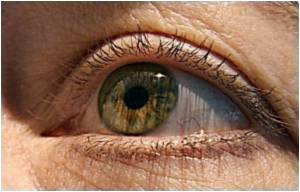The traditional view is that learning is based on the weakening or strengthening of the contacts between the nerve cells inside the brain.

"This means a dramatic increase in the brain's learning capacity. The cells we have studied control the blink reflex, but there are many cells of the same type that control entirely different processes. It is therefore likely that the timing mechanism we have discovered also exists in other parts of the brain", said Professor of neurophysiology Germund Hesslow.
Professor Hesslow and colleagues and Dan-Anders Jirenhed have used 'conditioned reflexes' for the research. The principle comes from the Russian researcher Ivan Pavlov, who, around the turn of the last century, taught dogs to associate a certain sound with food so that they began to drool on hearing the sound. In the present experiment, the researchers studied animals that learnt to associate a sound with a puff of air in the eye that caused them to blink. If the time between the sound and the puff of air was quarter of a second, the animals blinked after quarter of a second even if the puff of air was removed.
If the time was changed to half a second, the animals blinked after half a second, and so on. The prevalent theories in brain research state that this learnt timing mechanism is a result of strengthening or weakening of the contacts – or synapses – throughout a network of nerve cells. However, using super-thin electrodes, the Lund group have now shown that no networks are needed: one single cell can learn when it is time to react. The cells which the researchers have studied are called Purkinje cells and are located in the cerebellum. The cerebellum is the part of the brain responsible for posture, balance and movement, and the researchers focused on those cells that control blinking. This work is basic research, but possible future applications could include rehabilitation following a stroke, which often affects a patient's movements.
The findings could also have a bearing on conditions such as autism, ADHD and language problems, in which the cerebellum is believed to play a part. "Intelligible speech is dependent on correct timing, so that the pauses between the sounds are right", explained Germund Hesslow. The new findings have already attracted attention in the research community: the internationally renowned memory researcher Charles Gallistel came all the way from Rutgers University in the spring to study the group's work. Work is now continuing to study what transmitter substance and what receptor on the surface of the cell are responsible for the newly discovered timing mechanism.
Source-Eurekalert










